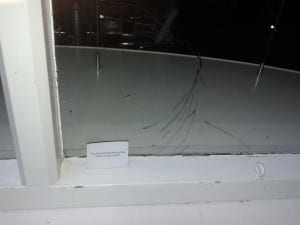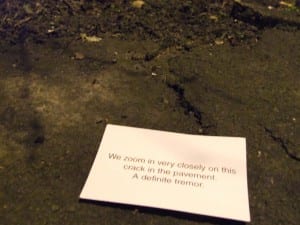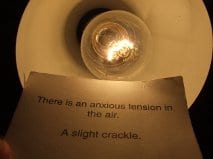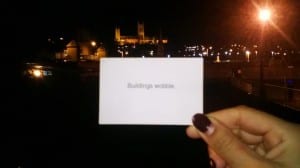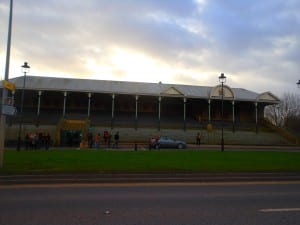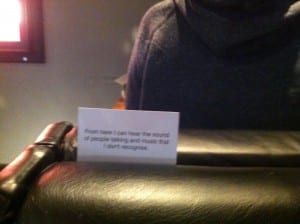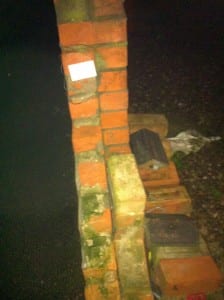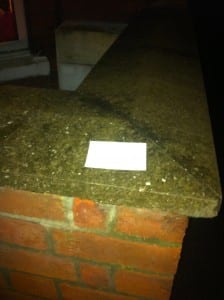This week I was to attach particular descriptions on cards to a site, specific to the description on that card. I found this task to be very interesting, in locating different sites which from everyday objects. Perhaps, just like Willy Dorners work the descriptions may enable performers to work within the certain perspective of the site.
Card 1 : ” The shop window disintegrates almost in slow motion”
There was a crack in the window which therefore looks like the window is disintegrating when passing in slow motion.
Card 2- “We zoom in very closely on a crack in the pavement. A definite tremor”
The force of the tree is causing cracks in the ground as the roots have pushed their way through. I found on my travels many cracks in the pavement but they didn’t seem to be the result of a bigger force .
Clue 3- ” “This is an anxious tension in the air. A slight crackle”
My first thought seeing the card state “a crackle in the air” was to find lightning, or wind. Then my thoughts turned to a metaphorical sense music from the night club expressing a certain emotion crackling the air. However, whilst on my drift I spotted a flickering lamp whose rays crackled the night sky. It then gave me an idea. The glow of a lamp definitely shines into the air, casting a light which forces it’s impact upon a scene. When a light is being turned on the crackle is only slight as the bulb bursts into full emission.
To conclude, all these descriptions could trigger an idea for a site specific performance, can have many meanings and don’t simply state a certain site . Descriptions and sites can be overlapped so that just like my journey we can drift from site to site and see a continuous journey of society, of a developing narrative and of performance.
